The main idea of the keto diet is to significantly reduce carbohydrate intake and increase fat consumption, which puts the body into a state of ketosis.
However, to achieve and maintain ketosis, it is important to carefully choose food products.
Understanding which foods and in what quantities can be consumed on a keto diet is a key factor for successfully following this nutritional plan and gaining maximum health benefits.
In this article, we will examine the food groups that can and, in some cases, should be eaten on keto. We will also look at the main features of consuming proteins, fats, and carbohydrates in general.
Main Principles of Food Selection
The main focus should be on foods that are low in carbohydrates and high in healthy fats.
On the keto diet, you can consume the following categories of foods in virtually unlimited quantities:
- Meat and Fish: choose fatty cuts of meat (beef, pork, lamb) and fish (salmon, mackerel).
- Vegetables: prefer low-carb, non-starchy vegetables such as broccoli, cabbage, tomatoes, cucumbers, and zucchini.
- Greens: you can consume any greens.
- Dairy Products: any dairy products except milk, low-fat products, and those containing added sugar: cheeses, butter, heavy cream, kefir, and sugar-free yogurts.
- Fats and Oils: olive, coconut, avocado, and flaxseed oils.
In moderate amounts (100-200 grams per day), you can consume:
- Nuts and Seeds: such as almonds, walnuts, chia seeds, and flaxseeds.
- Berries: such as raspberries, strawberries, blueberries, blackberries, and gooseberries.
Protein Sources on the Keto Diet
On the keto diet, it is important to choose not only those protein sources that contain minimal carbohydrates but also those that contain a large amount of fats.
Essentially, the keto diet boils down to one rule – eat those foods that raise insulin levels in the body the least.
Insulin levels are raised by sugar, carbohydrates, and large amounts of protein without fats that restrain it.
Fats help to restrain and reduce the rise in insulin levels. That’s why fatty protein sources are preferred on keto.
When protein is consumed in large quantities without sufficient fat accompaniment, it can partially convert to glucose through the process of gluconeogenesis.
Meat Products: Excellent options include fatty meat, poultry, and fish. For example, beef, chicken, and salmon are not only rich in protein but also contain healthy fats necessary for maintaining ketosis.
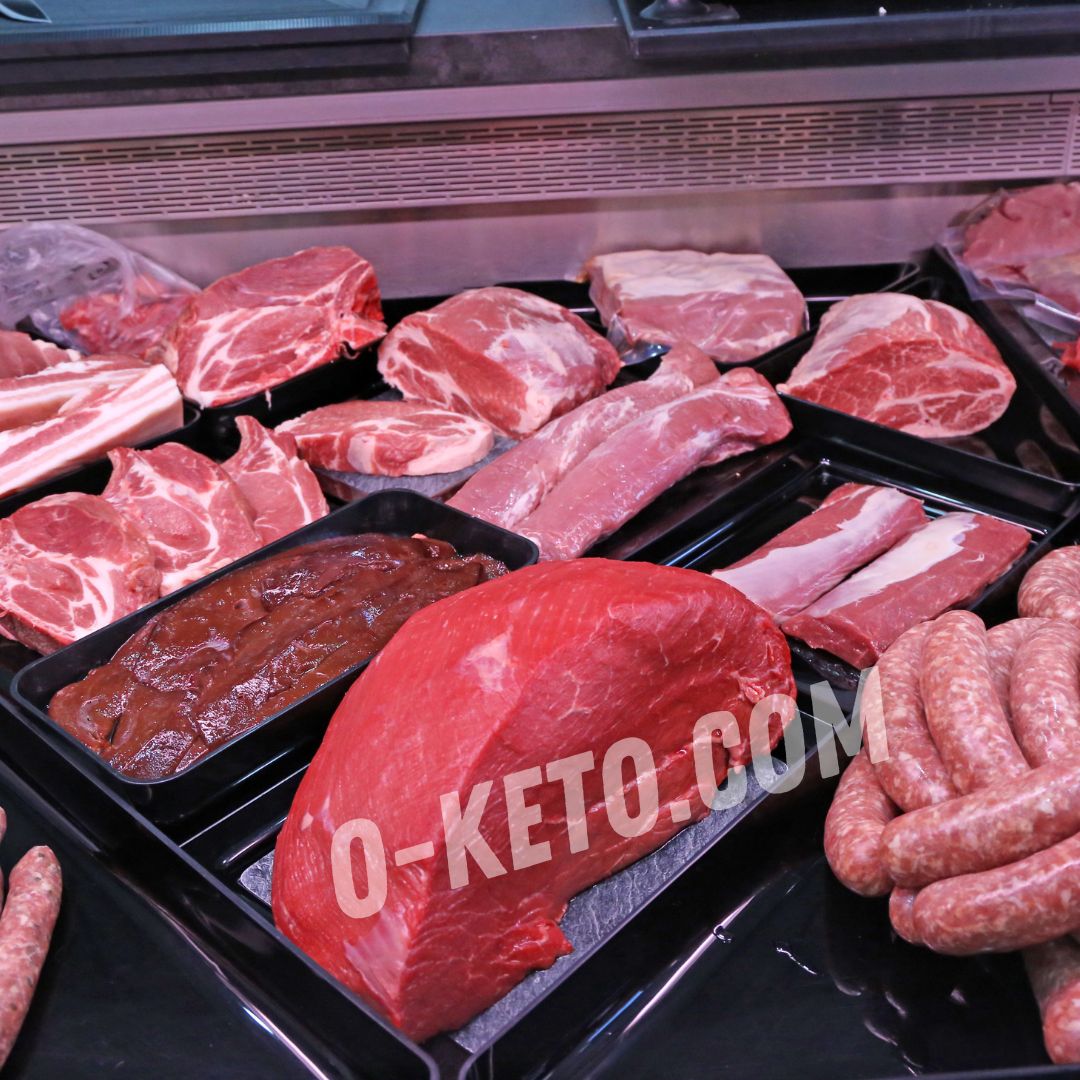
Organ meats such as liver, hearts, and gizzards deserve special mention. They contain more nutrients than the meat products themselves.
However, the requirement for fat does not mean that chicken breast or low-fat fish varieties are prohibited on keto.
You can easily include low-fat products in your diet by adding extra fats during cooking. For example, by adding:
- mascarpone and other cheeses;
- homemade mayonnaise or fatty sauces;
- vegetable oils.
Eggs: In addition, eggs are a versatile and accessible source of protein that also contains healthy fats.
Dairy Products: You can also use cheeses and dairy products low in carbohydrates, such as hard cheeses and Greek yogurt.
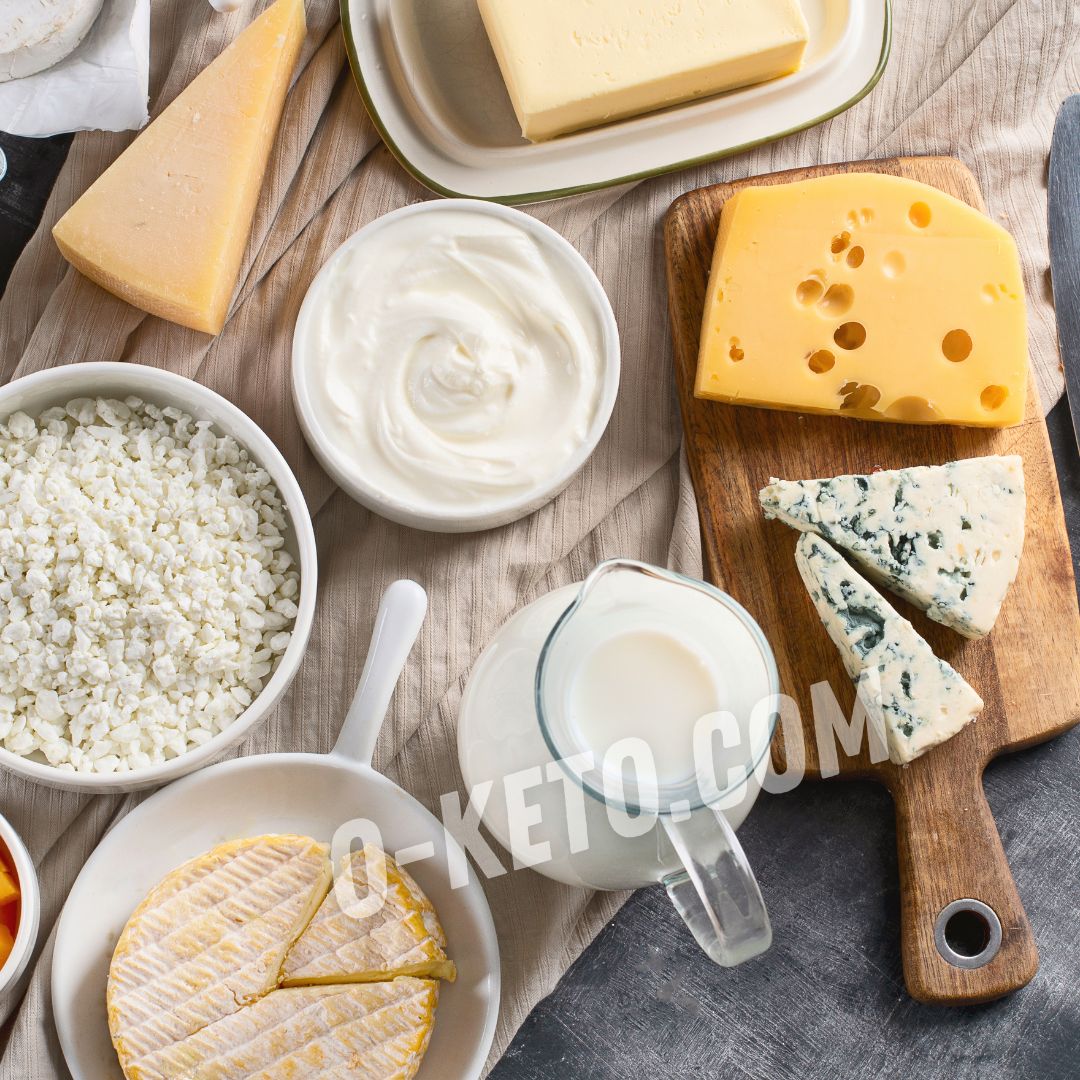
Nuts and Seeds: Don’t forget about plant sources of protein such as nuts and seeds.
Almonds, walnuts, and chia seeds can be a great addition to dishes, providing not only protein but also healthy fats.
Vegetables and Greens Suitable for Keto
The main principle of counting carbohydrates on the keto diet is to account only for net carbohydrates.
Net Carbohydrates are the total amount of carbohydrates minus probiotics, prebiotics, and sugar alcohols. That is, only those carbohydrates that can affect blood glucose and insulin levels are counted.
Prebiotics serve as food for beneficial bacteria in the intestines. They are not digested or absorbed by the body, and therefore do not affect the number of calories and carbohydrates consumed.
Examples of prebiotics include fiber and inulin.
Probiotics are live microorganisms that help maintain a healthy gut microbiome.
Probiotics themselves do not affect the carbohydrates or calories in your diet.
Sugar Alcohols are a type of low-calorie carbohydrate found in natural products or added to food as sugar substitutes.
They are partially absorbed by the body but have a significantly lesser effect on blood sugar and insulin levels compared to regular sugars.
The best sugar alcohol for keto is erythritol.
Greens: Virtually all greens contain a large amount of fiber and a small amount of other carbohydrates.
Therefore, on keto, it can be consumed in virtually unlimited quantities. You simply cannot eat so much greens that you exceed any carbohydrate limits.
Moreover, greens are not only permissible in large amounts on keto but are also highly recommended.
In general, any greens have anti-inflammatory properties and help to compensate for the effects that a large amount of saturated fats in food can have on the body.
Examples of greens include spinach, arugula, parsley, cilantro, and watercress.
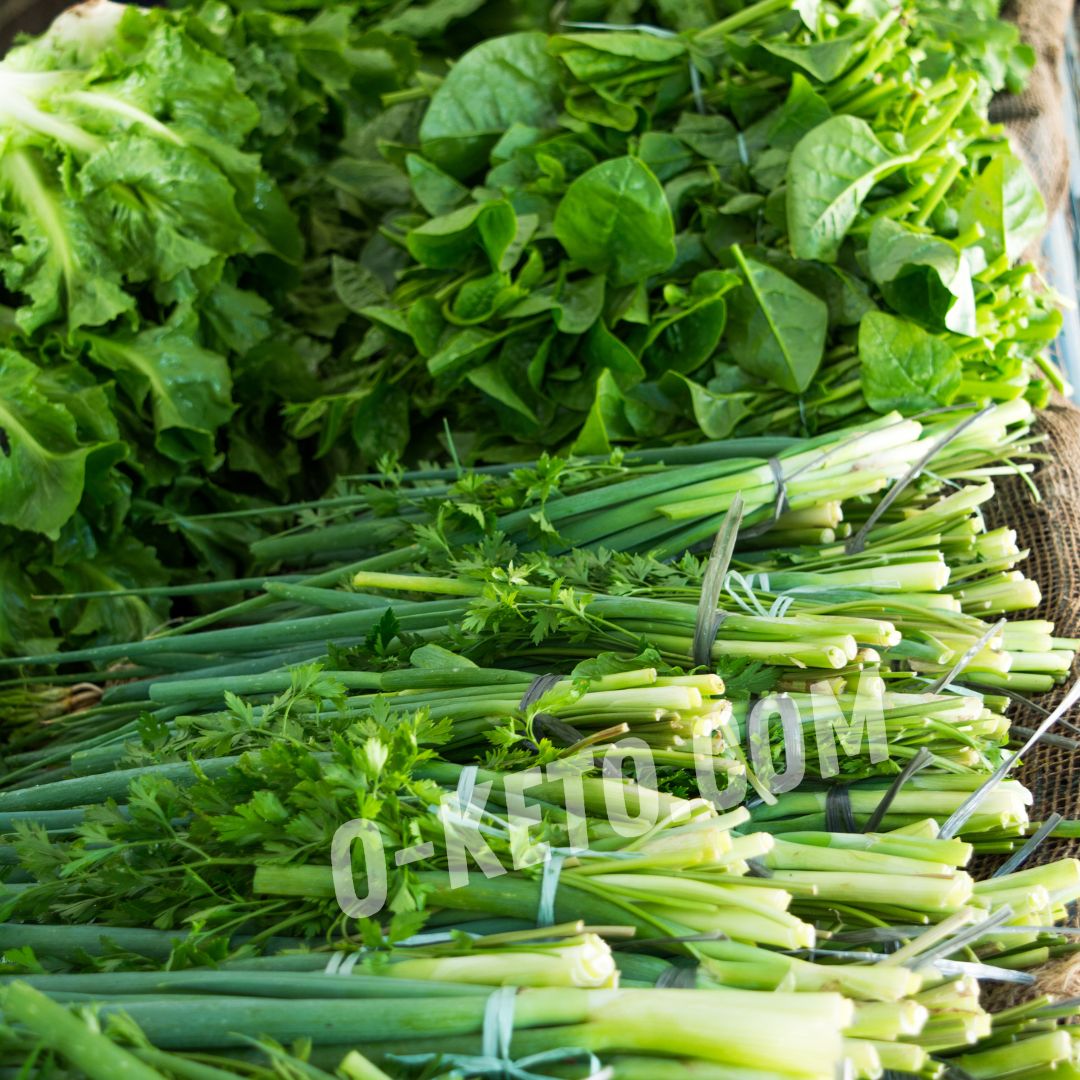
Vegetables: As for vegetables, you can consume any non-starchy vegetables. Virtually all non-starchy vegetables contain a small amount of carbohydrates.
For example, cruciferous vegetables such as broccoli, cauliflower, and regular cabbage are perfect for the keto diet.
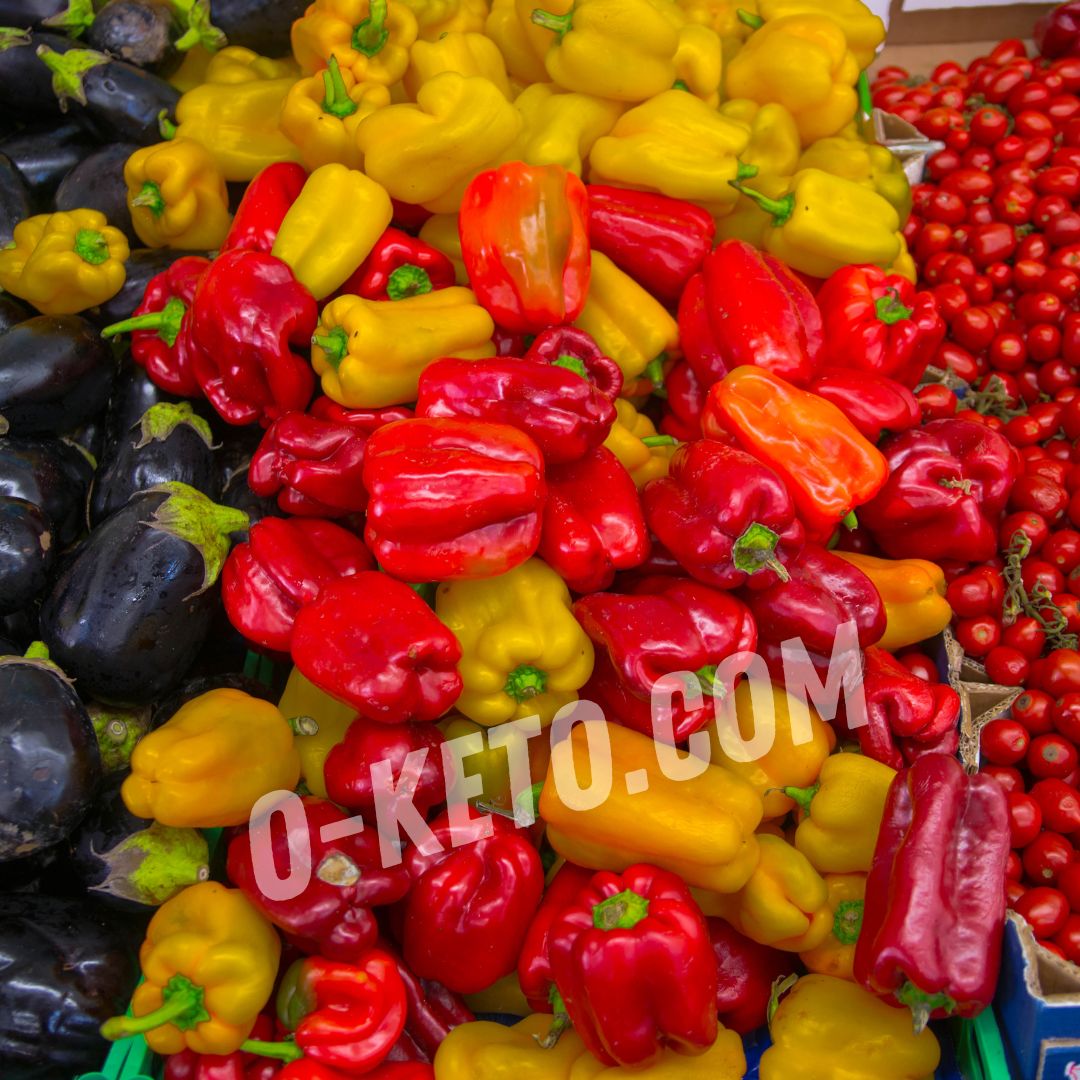
Some vegetables, like carrots, pumpkin, or onions, contain more carbohydrates than others, so they should be consumed in moderation.
Like greens, vegetables are highly recommended for consumption on the keto diet due to their anti-inflammatory properties.
Remember that greens and vegetables on keto should be consumed with healthy fats (such as olive oil, homemade mayonnaise, or fatty sauce). This not only helps to restrain insulin spikes but also aids in the absorption of fat-soluble vitamins.
Berries
Since berries contain a large amount of fiber that restrains carbohydrates from fructose, any berries that do not grow on trees are available on keto in moderate amounts.
Cherries, sweet cherries, and mulberries are considered berries, but their consumption is better limited.
100-150 grams of berries are quite permissible for daily consumption.
Berries can be eaten after the main meal as a dessert. This way, there will already be a cushion of fatty food in the stomach that will reduce the possible insulin spike.
Examples of berries include raspberries, blueberries, blackberries, and strawberries.
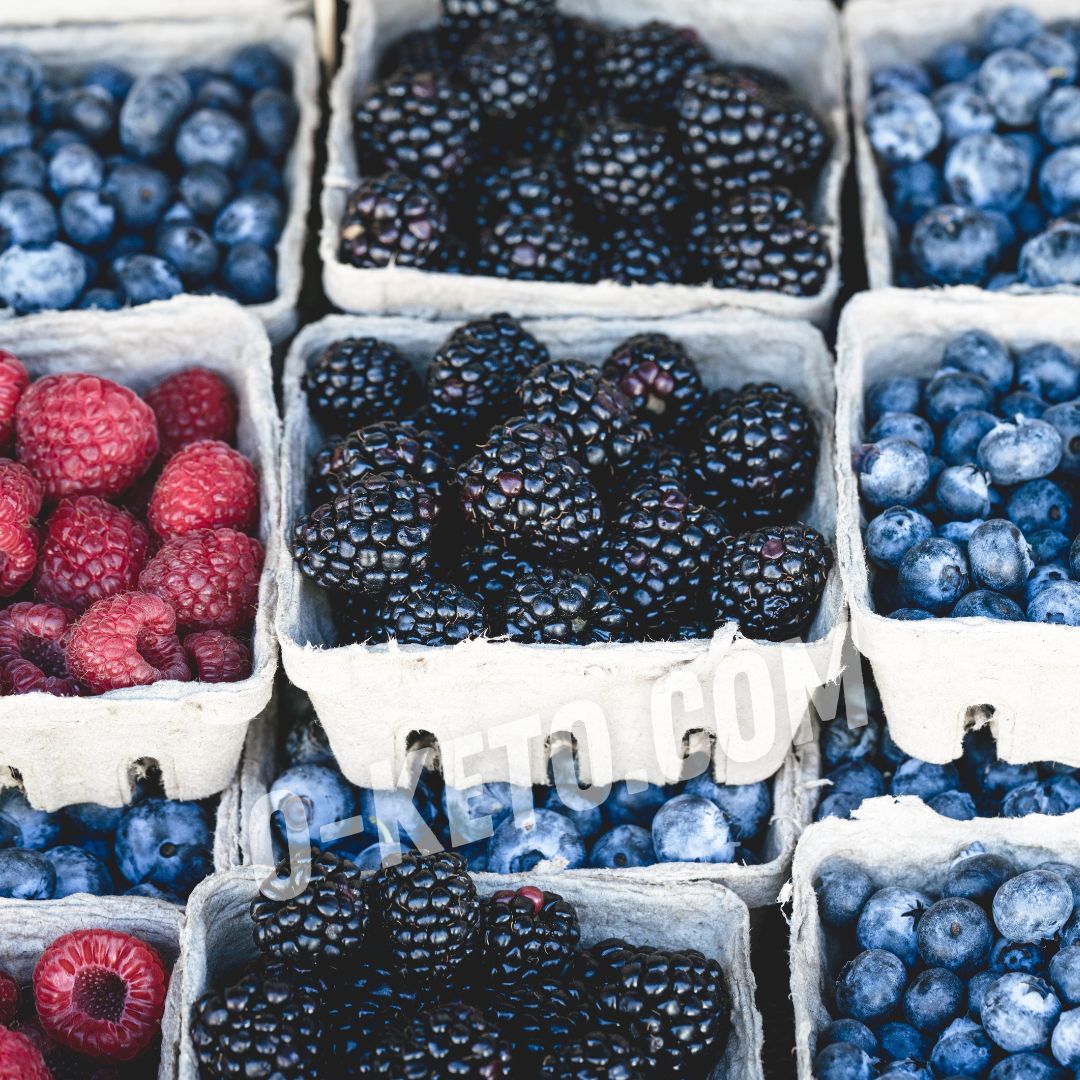
Fruits on the Keto Diet
Only a small number of fruits are available on the keto diet. But even these fruits are available in small amounts.
For example, you can eat no more than one apple a day.
Fruits contain fructose, which acts similarly to sugar. Moreover, while sugar affects the entire body, fructose strikes the liver specifically. Regularly consuming fruits in large amounts can lead to non-alcoholic fatty liver disease, which can be a cause of liver cirrhosis.
There are exceptions to the fruit limitations: you can eat lemons and limes in large amounts, if you wish.
Coconut is also a fruit. You can consume coconut meat. As for coconut water, it is available in moderate amounts.
The only fruit you can eat in unlimited quantities on keto is the avocado.
Sources of Fats on Keto
In addition to choosing foods high in fats, keto also pays attention to the quality of these fats.
Trans Fats: First and foremost, it is recommended to completely eliminate trans fats, processed fats, and hydrogenated oils from the diet, as they are associated with an increased risk of cardiovascular diseases and inflammatory processes in the body.
Sausages, hot dogs, dumplings, margarine, store-bought mayonnaise, fast food, store-bought baked goods, and any convenience foods generally contain trans fats. They can also be found in products containing hydrogenated oils.
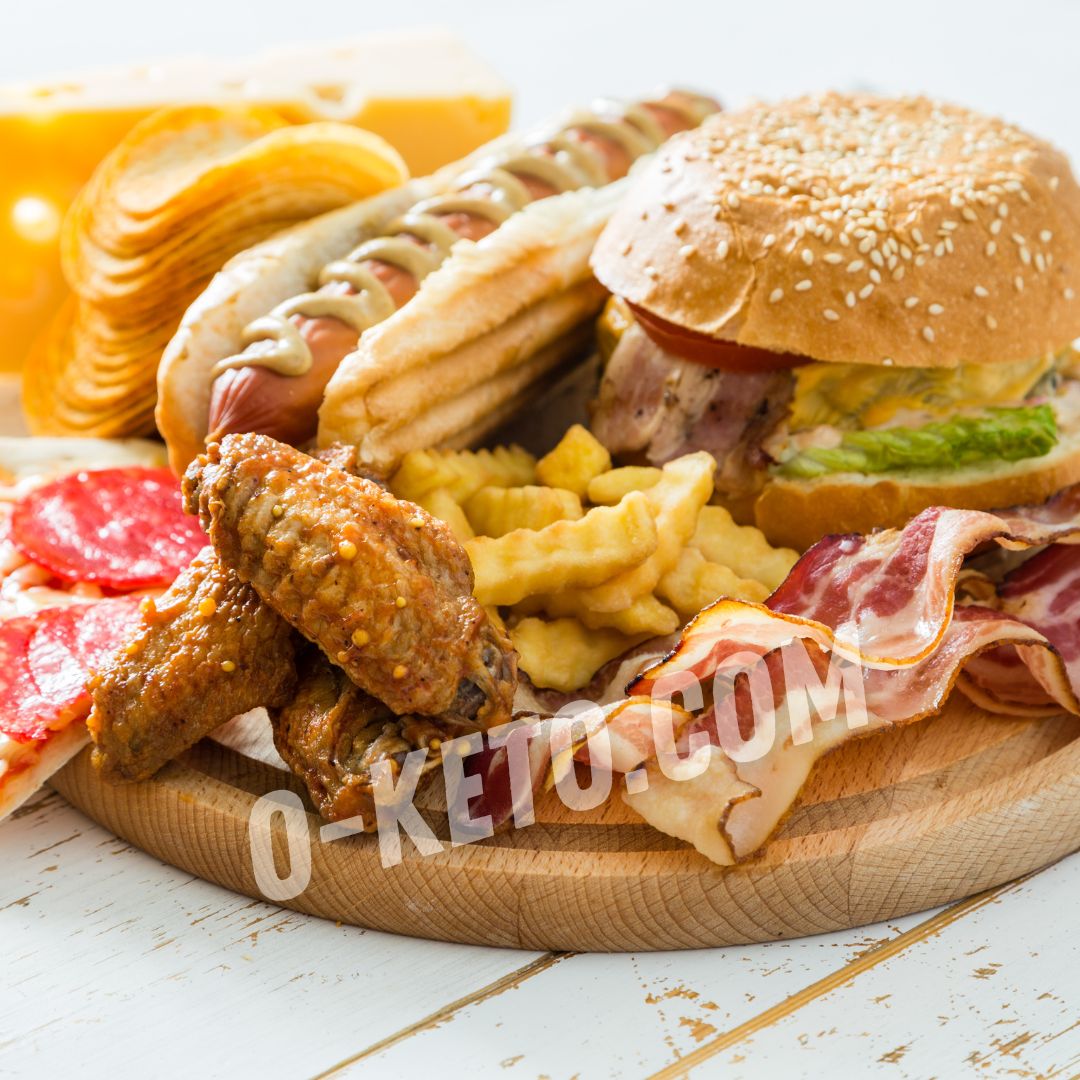
Ideally, you should buy meat and cook it yourself.
Products Containing Omega-6 Fats are necessary for the body. However, high consumption of Omega-6 fat-rich products leads to inflammatory processes in the body due to an imbalance between Omega-3 and Omega-6.
It is therefore recommended to reduce the intake of products rich in Omega-6 or increase the intake of Omega-3 rich products.
Examples of Omega-6 rich foods include sunflower oil, corn oil, and soybean oil.
It is worth noting that Omega-6 fats undergo oxidation and form harmful free radicals during heat treatment. Oxidized fats can cause inflammatory processes in the body.
Monounsaturated Fats: This type of fat is considered healthy, and its consumption is recommended not only on the Mediterranean diet but also on the keto diet.
They help to lower “bad” cholesterol (LDL) and maintain “good” cholesterol (HDL) levels.
Examples of foods rich in monounsaturated fats include olive oil, avocado, and its oil, almonds, and macadamia nuts.
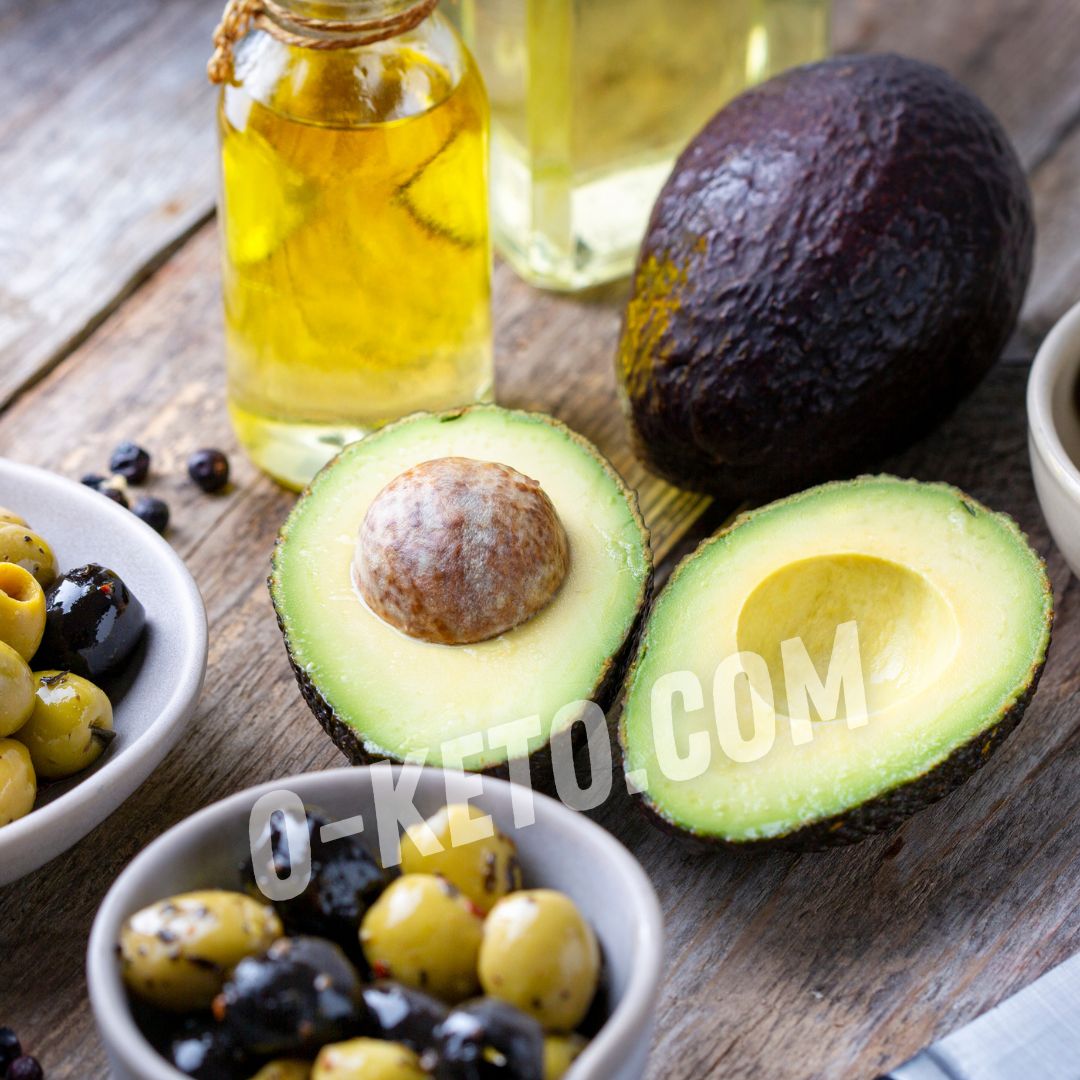
More examples of products containing various types of fats can be found in the additional articles attached below.
Omega-3 Fats are the ideal type of fats for keto, as they have strong anti-inflammatory properties and support brain and heart health.
These fats are abundant in any seafood, including seaweed, shrimp, mussels, and any types of fish (such as salmon, mackerel, and sardines).
From plant sources, flaxseeds, walnuts, chia seeds, and perilla oil are rich in Omega-3.
Saturated Fats on the keto diet are not considered harmful, especially if they come from quality sources such as butter, ghee, coconut oil, and fatty meat.
On the keto diet, saturated fats are used by the body for energy in the process of ketosis, and when consumed in moderation, they can be part of a healthy diet.
Sugar Substitutes
Sugar is completely banned on the keto diet. However, you can replace it with available sugar substitutes that can be consumed in unlimited amounts.
However, it should be noted that consuming any sugar substitutes in large amounts can lead to stomach upset (diarrhea).
Such sweeteners include erythritol, stevia, and monk fruit. These types of sugar substitutes are not absorbed by the body at all.
There are many other sugar substitutes that can be used on keto, such as sucralose and allulose. However, they may affect insulin levels or cause other side effects. Therefore, it is better to avoid or consume other sugar substitutes in small amounts.
What You Can Drink on Keto
But not only food is important for adhering to the keto diet. Even if you perfectly follow the foods listed above, all your efforts can be wasted, for example, due to one glass of juice.
However, there is a wide variety of drinks available on keto, as long as they are free from sugar, honey, and fructose.
Naturally, you can consume any water without restrictions, including mineral, sparkling, sodium, magnesium, and so on.
You also have access to coffee, black and green tea, matcha, mate, hibiscus, herbal teas, and even chicory.
Kombucha is also available on keto in moderate amounts, provided it does not contain added sugar.













